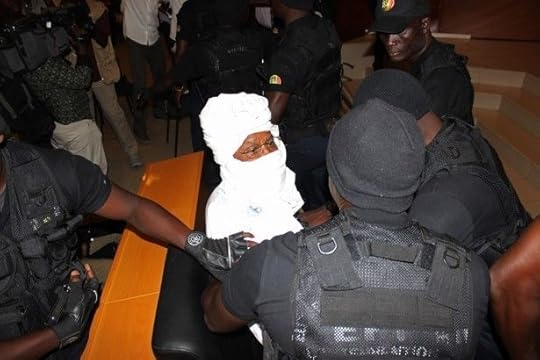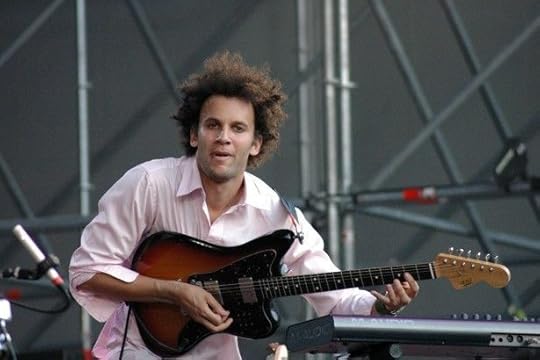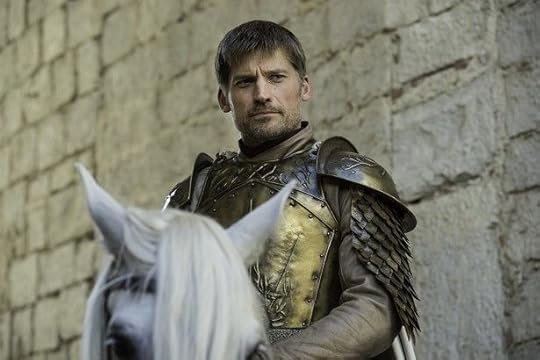Atlantic Monthly Contributors's Blog, page 154
May 30, 2016
The End of Thailand's Tiger Temple

Wildlife officials in Thailand have seized some of the more than 100 tigers held at a Buddhist temple in response to allegations of mistreatment of the animals.
Six tigers were tranquilized and removed Monday from Wat Pa Luangta Maha Bua Yannasampanno, which is known as “Tiger Temple,” according to animal-welfare advocates. The temple is a popular tourist spot in Kanchanaburi province, where visitors are allowed to play with tigers and cubs and even take selfies with them. Government officials plan to clear the temple of all tigers, and will spend the next week removing the remaining 131 animals. The tigers will be transported to government sanctuaries elsewhere in the country.
For years, former temple workers and animal-welfare groups have alleged that the tigers have been abused—beaten, fed poorly, and housed in small concrete cages with limited time outside. Some conservationists say the monks have illegally bred and trafficked the animals. Temple officials have denied the allegations.
Monday’s raid was led by Thailand’s national parks, wildlife, and plant conservation department, which obtained a warrant from a provincial court to seize the tigers, according to The Nation, an English-language newspaper in Thailand. Officials had previously seized 10 tigers in raids in January and February. The department granted the temple a zoo license in April, but appeared this month to reverse course.
“We have a court warrant this time, unlike previous times, when we only asked for the temple’s cooperation, which did not work,” Adisorn Nuchdamrong, deputy director-general of the national parks department, told Reuters Monday. “International pressure concerning illegal wildlife trafficking is also part of why we’re acting now.”
The Wildlife Friends Foundation Thailand, an animal-rights group based in Phetchaburi province, located south of Kanchanaburi, documented the interaction between the monks and department officials:
The Nation described “high tension” at the temple as wildlife department staff, local police, Thai armed forces, and members of animal-rights groups descended on the grounds. At first, the temple’s monks denied entry to officials. Later, monks unchained several tigers and allowed them to roam freely, which animal-rights activists said was an attempt to hinder operations to confiscate them.
More than 300 officials remained at the temple overnight to ensure the remaining tigers’ safety, the AP reported.
The New York Times in May reported temple officials say the tiger attraction earns $3 million a year in ticket revenue, while government officials say it brings in $5.7 million.

The Conviction of Chad's Ex-Ruler

Hissène Habré, the former dictator of Chad, has been found guilty of crimes against humanity committed during his eight-year-rule and sentenced to life in prison.
Habré was convicted Monday of crimes against humanity, war crimes, and rape, the BBC reported, nearly a year after his trial began. The verdict came from a court in Senegal specially appointed by the African Union to judge Habré. Habré's victims and human-rights groups had spent almost two decades trying to bring him to justice.
Reed Brody, the Human Rights Campaign lawyer who initiated the case against Habre, praised Monday the efforts of the victims, many of whom recalled experiences of torture in their testimonies against Habré while the former ruler sat in the same room.
“This verdict sends a powerful message that the days when tyrants could brutalize their people, pillage their treasury, and escape abroad to a life of luxury are coming to an end,” Brody said in a statement. “Today will be carved into history as the day that a band of unrelenting survivors brought their dictator to justice.”
The trial was a landmark event in international criminal justice. In Africa, it marked the first time in which the courts of one country prosecuted the former ruler of another for alleged human-rights abuses.
Habré came to power in 1982, in the midst of warring between Chad and neighboring Libya over the Aouzou Strip, the northernmost part of Chad that Libyan ruler Muammar Qaddafi sought to control. Habré’s forces, backed by the United States and France, eventually drove Libyan troops out.
Habré was deposed in 1990 by Chad’s current president, Idriss Déby, who served as commander-in-chief of the army under Habré. Habré fled to Senegal, where he has lived since, marrying and having children. A Chadian commission established after Habré’s ouster to investigate the leader’s alleged crimes found the Directorate of Documentation and Security, the government agency in charge of suppressing the regime’s political opponents, was responsible for about 40,000 killings and 200,000 cases of torture. Thousands died of torture, malnutrition, and disease in secret detention camps in the capital, N’Djamena, and other prisons.
More than 90 witnesses testified during the trial. Habré watched the proceedings unfold behind a pair of sunglasses, his head and face wrapped in a white turban. He denied the allegations against him, refused to recognize the legitimately of the court, and on some occasions was brought inside by force. Habré has 15 days to appeal the verdict, according to the AP.

How Tyondai Braxton Subverts and Destroys His Own Music

No one can accuse Tyondai Braxton of taking the easy way out. The guitarist, multi-instrumentalist, and composer was previously in the band Battles, which is sometimes referred to (with possible pejorative connotations) as math-rock, and sometimes (with ambiguous connotations) as experimental rock. That thorny music has found popularity—“Atlas,” a challenging though electrifying 2007 single he co-composed, is stunningly ubiquitous, showing up in video games, car commercials, and even a mortgage ad during the Super Bowl. Braxton left the band in 2010 to pursue his own electronic-based music, which like Battles has earned critical acclaim.
Related Story

Moogfest 2016: A Futurism Weighted With History and Trepidation
Braxton performed at Moogfest 2016, with a solo act built around his 2015 record Hive1. Even as electronic music becomes ubiquitous, its more ambitious facets remain tough to understand and easy to dismiss as beeps and boops. I spoke with Braxton before his performance, drilling into how he approaches and builds his work, and what he’s doing during a live performance. Challenging music runs in Braxton’s family—his father is the MacArthur-winning jazz(-ish) saxophonist and composter Anthony Braxton. Although their work runs in parallel, the father and son don’t have much of a relationship, as Tyondai discusses here. This interview has been condensed and edited for clarity.
David Graham: You’ve worked with a band, and you’ve worked as a solo artist with other musicians. What’s your one-man show like?
Tyondai Braxton: It’s kind of like solo electronic music, music from the last record I did and a bunch of other new stuff at this point. The Hive music is my starting point, my base, and then I’m blowing it out from there.
Graham: When you say blowing it out, does that mean playing new stuff, does that mean improvising over it, what does that mean?
Braxton: Both. Playing new stuff and improvising over it. The music lends itself to that kind of real-time agility. It’s very sharp and agile, so I find room to improvise, and at the same time there are a lot of fixed moments and playback and stuff like that. The goal is keeping the balls in the air when you’re improvising and there’s playback, how to make a cohesive set out of that stuff. Which is fun.
Graham: What is your compositional process like, and what do you come out with at the end—do you have a standard notated chart?
Braxton: This project represents to me a real psychological—not just compositional growth, maybe, but maybe a psychological shift or growth as well. Before this predominantly it’d be about coming up with a line, expanding the line, and being able to have predefined characters within the music, through-composed, through-notated. Whereas with modular synthesis and generative music, it makes you think of music in a completely different way. I tried to notate music for electronics at first, and it just sounded too square. The idea was to really learn the language of what it means to do generative music, and find myself in that. Then the idea is finding room to improvise with it as well.
Graham: So, if you play, say, “Gracka” two nights running, how similar is it?
Braxton: It’s similar. It’s certainly not deconstructed to the point where it’s not familiar. People who know the record will be able to hear the pieces back to back, and then I find ways to subvert them and destroy them. Some I destroy less than others.
Graham: Do you think of this music as existing in any sort of genre?
Braxton: It’s certainly relative to electronic music and dance music, it’s certainly relative to generative music and musique concrète. A lot of my heroes are composers like [Iannis] Xenakis and [Pierre] Schaeffer. The goal for me for this project was to also think like, What does it mean to do that music now? What does it mean to have generative music now? Which to be honest, it’s not a unique question. Generative music is all around us at this point. That is the zeitgeist in some way. It’s just exciting, especially as a person who has come from performing background, where you’re just—you’re playing everything, it’s such a crazy—it’s just such a refreshing way of thinking about music. It totally pulled me out of where my comfort zone was, and I kind of, like, didn’t know what I was doing and maybe still don’t, but I’m just enjoying the newness of it.
Graham: Do you see what you’re doing now as being part of a linear progression, or is it parallel to more performance-based stuff that you’ve done in the past?
Braxton: I think it is a linear progression. The thing that’s the most exciting about composition for me is getting a sense of the composer’s sense of craft and control. When you start using generative figures and generative methods in music, you’re relinquishing some of that control. That was a huge issue for me, you know? Both as far as me wanting to like control the situation but also me not trusting these methods enough to feel like I really could craft something great out of them. That was the first thing. But then as I got better at doing it, I realized that you actually can get better at generative music and you can make things that sound like yourself when you’re playing. It is an extension. The goal with all technology, especially in the arts, is to have it be extension of your idea, rather than just relying on the technology as a crutch. But the goal is to actually know it, be fluent in the language long enough where you can be expressive and know what you’re doing. You’re playing it, as opposed to it just playing you.
Graham: When you say you’re getting better at generative music, what does that sound like to you? How do you hear that progress?
Braxton: The most amazing thing about it is, for me at least, the way that I think about music now. I think about it in shape, in a way. I know that sounds kind of like funny, oh, some like savant kind of thing. That’s not what I mean. It’s more like, with LFOs, low frequency oscillators, you can alter the shape of a sound wave. You could have that wave run through the sequence at some awkward thing. So you could actually start thinking about forms like that, you know? That’s such a heavy thing, and then suddenly I go back and I listen to orchestral music. You could start thinking about how you could generate worlds of sound like that just through oscillators and generative means. Then suddenly you’re like, wow, you’re thinking in these longer plateaus. And then awkwardly I’ve started to play guitar again, because I haven’t played in a while. It’s just a really funny experience. Suddenly you’re playing guitar and you’re playing a riff or something and you’re like doo-doo-doo, and it feels so arbitrary. Suddenly you’re working with such a micro—or I guess that’s the way to describe it, you’re working at such a minimal scale, that after painting in these broad strokes and getting all these crazy details by thinking in generative means, to go back to playing riffs, it feels kind of archaic. But that’s just me, that’s not really a larger statement. That’s me trying to figure out how all these things kind of go together.
Graham: How long had you not played guitar?
Braxton: About a year.
Graham: Is that the longest you had gone since you picked it up?
Braxton: By far. By far. When I first started playing guitar, I would play for six hours a day as a kid. When I left Battles and started getting into the modular-synth stuff and really sitting and trying to learn it and practice it, then I kind of pushed the guitar away. At 20 years of playing I’m like, Okay, I can play that as well as I could play it. As a side point, once you pick up an instrument that you haven’t played for a year, no matter how many years you’d played before—I was like, Oh my god, I’m a child playing this.
Graham: Can you imagine going back to guitar-based rockish music?
Braxton: I don’t think I can ever go back to rock-based music, but I do know that I’ll always utilize guitar in some way, in my orchestral music. The rock-band model for me at this point—I hesitate to make a blanket statement, but it’s certainly not something that really interests me right now.
Graham: I saw your father at Big Ears last month premiering a piece with a new notation structure, dealing with some of the same challenges you have. Do you talk with him about things like notation, or composition techniques?
Braxton: I hate to say it, we actually haven’t spoken in, man, like 10 years. It’s—I know, like—
Graham: Sorry to ask an awkward question.
Braxton: No, it’s all good, and I know interviewers are like, “Oh yeah, your dad, of course …” I’m like, “Oh, actually …” I can say, you know, he’s such a heavy figure and I’ll always be in awe of his musical world and stuff like that. But yeah, unfortunately we don’t have the relationship at this point where we’re kind of like, on sharing ideas or showing him stuff. He’s certainly been a major influence on me.
Graham: While you’re working out these ideas in your own music, what are you listening to right now?
Braxton: These past maybe 10 years I’ve just got really so into orchestral music. Large scale—not chamber stuff, but large-scale, crazy, sound-world pieces. One of my favorites is Edgard Varèse. [Olivier] Messiaen. Xenakis. The goal has been to try to replicate that sound world and that way of having the instruments interact in electronic music, and it is easier said than done. If you have a computer you could open Ableton and make a thousand tracks and plug in a sine-wave loop and it will be a big mass of sound. But the way the timbres of the instrument interact, it’s a different proposition when it’s electronic vs. acoustic. As similar as what you would consider the musical goals of a lot of serious electronic music and serious composition, the means of getting there are actually very different.
Graham: Do you listen to these things with a score in front of you?
Braxton: Sometimes I do, especially when I’m pulling a piece apart and trying to figure out how it works. You kind of wish there’s something like that for electronic music. I listen to music very loud, both electronic and orchestral music, and I listen all the time. I’m constantly listening to music. If anything I should—when you’re creating sometimes it’s bad to listen because you’re trying to come up with something and then you hear something that’s amazing and you’re like, Oh fuck, that’s … You’ve gotta boycott listening and just do it.

May 29, 2016
Game of Thrones: All in the Family

Every week for the sixth season of Game of Thrones, Christopher Orr, Spencer Kornhaber, and Lenika Cruz will be discussing new episodes of the HBO drama. Because no screeners are being made available to critics in advance this year, we’ll be posting our thoughts in installments.
Christopher Orr: The title of tonight’s episode was “Blood of My Blood,” and rarely has a title been more apt. The phrase is Dothraki—Quoy quoyi—and it’s a term of address between a khal and his (or, as of tonight, her) bloodriders. So it most literally related to Daenerys’s announcement that she wanted not the customary three bloodriders, but an entire khalasar’s worth, to help her pry Westeros from those men in iron suits hiding in their stone houses.
But blood ties—and, in particular, family reunions—drove almost every element of the episode. Moments before giving her speech, for instance, Daenerys was rejoined by her erstwhile stray puppy Drogon, who, judging from his growth, spent the first half of the season eating half of Essos.
Rewinding to the start of the episode, we opened with Meera and Bran on the run in the icy woods north of the Wall. Almost as soon as one could say, “Umm, what happened to that zombie army that was hot on their tails?” said army in fact showed up. (Before it did, though, Bran had some interesting historical flashbacks, including a nice vision of the wildfire-obsessed Mad King, Aerys Targaryen, who reportedly continued to yell “burn them all” even after he was impaled by his own kingsguard, one Jaime Lannister.) In any case, as the ghouls converged on Meera and Bran, who should appear but a man on a horse with a flaming morningstar who whomped himself some undead before rescuing them.
The whomper in question was—of course—Benjen Stark, younger brother of Ned and former First Ranger of the Night’s Watch, who disappeared above the Wall all the way back in season one and whose return Thronesiacs have been anticipating ever since. Bran was certainly glad to see his uncle, but Benjen’s news that Bran has to master his new Three-Eyed-Crow powers in time for a mano a mano with the Night King is pretty much the definition of familial pressure. At least he gave the boy a big ol’ cup of rabbit’s blood to fortify him.
From there, we traveled to Horn Hill, the seat of House Tarly down south in the Reach, for a decidedly less-happy family reunion. We’ve heard plenty about Samwell’s dad Randyll—brilliant military commander, toxic garbage fire as a dad—but this was our first meeting with him. Suffice to say that he lived up to his reputation, at least on the latter score. It was a nice reversal when Sam, on the verge of leaving Gilly and Little Sam with this paternal nightmare, instead came back for them—and for the family’s ancestral Valyrian-steel sword, Heartsbane. As noted, there are only a handful of these swords in all of Westeros, and while Sam may be an unlikely wielder of one, it suggests that he might be using its White-Walker-wiping-out powers at some point in the future.
We're six episodes in and Cersei still hasn't had her trial by combat?
Then, on to King’s Landing, where Mace Tyrell led an army to save his daughter Margaery from the shame of a Walk of Atonement. I don’t know what you all think, but I’m a tad brokenhearted about the state of the King’s Landing plot these days. For years, it was money in the bank that any scene in the capital would be a good one. But showrunners David Benioff and D. B. Weiss have really lost the thread the last two seasons. Part of the problem is that so many of the most interesting characters in King’s Landing are now dead (Tywin) or scattered (Tyrion, Littlefinger, Varys). But the ascent of the High Sparrow and the Faith Militant has been sloppy and abrupt from the beginning and continues to be so. For starters, why didn’t the Tyrells bring their army when Margaery and her brother Loras were first imprisoned? Why didn’t the Lannisters do the same for Cersei?
Tonight we had the nonsensical spectacle of the High Sparrow preparing Margaery for her Walk of Atonement (a small thing: but why didn’t she have to cut her hair?) and declaring his pleasure to die as a martyr to principle—only to immediately reverse himself and say, no, just kidding, nobody has to die, we’ve actually formed a secret alliance with Margaery and Tommen. There are some interesting elements here—notably that Margaery’s conversion is clearly a calculated one, presumably premised on the idea that a Crown-Faith partnership will make her (and her infinitely pliable husband Tommen) more powerful. But as with everything regarding the Faith Militant, it all seemed rushed: two scenes of Timid Tommen listening to the Sparrow’s song, and suddenly the entire balance of power in King’s Landing has shifted. Also: We’re six episodes in and Cersei still hasn’t had her trial by combat? The Westerosian wheels of justice are turning awfully slowly, and I doubt that, in the end, they will grind particularly fine.
We revisited the Twins for the first time in a long while, where Walder Frey berated two of his innumerable progeny for allowing the Blackfish to retake Riverrun, the house of his former liege lords the Tullys. When the unhappy pair reported that they don’t have enough troops for a frontal assault (the Mallisters and Blackwoods are both rebelling), he too played the family card, pulling the Blackfish's nephew, Edmure Tully, from the dungeons as a bargaining chip. (Poor Tobias Menzies, who plays the ineffectual Edmure. He just can’t catch a break role-wise: Brutus in Rome, nasty “Black Jack” Randall in Outlander, corrupt Geoffrey Dromgoole in The Night Manager…)
Just about the only plotline in tonight’s episode that didn’t directly reference family was Arya’s. After again watching the play about Westerosian history whose lead actress she’s supposed to be assassinating—last time we saw the Ned Beheading scene; this time we got the Purple Wedding—she decided that she didn’t want to murder her target after all. That’s the problem with being an acolyte of the Faceless Men: They don’t want you to kill the people you want to kill (viz. Ser Meryn Trant) and they do want you to kill the people you don’t (Lady Crane). Arya seems to realize she’s blown it for good this time—Jaqen H’ghar did warn her that “A girl has been given a second chance. There will not be a third”—and she unearths Needle as an insurance policy. Still, I suspect that if I were her I’d hit the road immediately rather than go back to my bunk at the House of the Black and White. They are the world’s greatest assassins, after all. I’m not sure you want to make it that easy on them.
An aside: I was among the many people who didn’t catch Richard E. Grant’s brief turn as the lead theater actor in last week’s episode. (Yes, I’m ashamed.) But tonight he was impossible to miss: Richard E. Grant as fake-Tywin! Sometimes the gods are good. That said, I think his perfect role on the show would have been as a young Walder Frey. But I suppose you can’t have everything.
In all, I thought this was the third episode in a row that felt as though it was really driving the plot forward in a satisfying way. (Dany is actually talking about returning to Westeros!) Of course the price of this momentum may be some of the awkward and/or abrupt plotting we’ve seen more of lately: the Kingsmoot last week, the sudden Crown-Faith alliance this week, etc. What do you two think? Is the plot moving too fast? Too slow? Just right? Or some combination of the three?

The Latest Military Offensives Against ISIS

Iraqi security troops, Shiite militias, and other forces have nearly surrounded Fallujah one week after they began a military offensive to recapture the city from Islamic State militants.
The forces were stationed outside Fallujah Sunday, and will eventually advance on the city, Reuters reported, citing state media.
Government forces and militias began their approach in the hours between May 22 and May 23, and are backed by U.S.-led coalition air strikes. They have seized some villages and other rural areas this week in their march toward Fallujah. The city, located east of Baghdad, was the first of several to fall to ISIS in January 2014, six months before the militant group declared a caliphate in Iraq and Syria and Western nations began considering air strikes. The city’s 50,000 residents have remained trapped since. At least 3,000 people have fled Fallujah to safety in the last few days, and some have been killed trying to escape, according to humanitarian agencies. The coming onslaught is expected to further endanger the remaining residents.
Iraqi forces on Sunday launched other offensives against ISIS elsewhere in Iraq. Government troops and Kurdish peshmerga fighters attacked ISIS militants in village east of the city of Mosul, which has been under ISIS control since June 2014. U.S. and Iraq officials hope to attempt to recapture Mosul if the offensive in Fallujah succeeds.
Reuters reported Sunday service members from the U.S.-led coalition were present on the front line near Mosul. Fighting appeared “heavy,” Reuters said:
Pick up trucks raced back from the frontline with wounded people in the back, and two of the U.S.-led coalition servicemen helped haul one man onto a stretcher.
Gunfire and airstrikes could be heard at a distance, while Apache helicopters flew overhead. One of the villages, Mufti, was captured by mid-day, the Kurdistan Region Security Council said in a statement.
Video footage from reporters on the ground in Saqlawiyah, located north of Fallujah, showed soldiers firing artillery, some wearing long-sleeved camouflage shirts and pants, others in T-shirts.
In Syria, rebels drove ISIS militants out of the the villages of Kafr Shoush and Braghida Sunday, the AP reported. ISIS had swept the villages earlier this week, catching the rebels by surprise.
The U.S. has said ISIS has lost 40 percent of its territory in Iraq and 10 percent in Syria after more than a year of bombing by coalition forces.

Germany Keeps Finding World War II-Era Bombs

Bomb-disposal technicians have discovered and defused a World War II-era bomb at the airport in the German city of Hannover, forcing more than 50 flights to be diverted to other airports.
The 551-pound American bomb was unearthed Sunday after experts conducting tests of soil in an area due for pavement resurfacing detected some magnetic interference, the AP reported. The explosive had remained untouched for more than 70 years.
Long after World War II ended, German authorities are still finding and deactivating unexploded bombs, mines, and other munitions throughout the country. Allied countries dropped nearly 2.7 million tons of bombs during the war. Nearly half of those came from American and British air forces and fell on Germany. To this day, hundreds of tons of undetonated ordnance are uncovered on German soil every year.
The decades-old bombs are often found during construction or excavation operations, and their careful detonations can require large evacuations. In December 2011, half of the population of Koblenz—about 45,000—was evacuated as bomb-disposal experts spent three hours deactivating two bombs, one American and one British, discovered in the riverbed of the Rhine river during a dry spell. In August 2012, 2,500 people in Munich were evacuated near a bar set to be demolished after workers discovered a U.S. bomb. In May 2015, 20,000 Cologne residents were forced to leave their homes because of a bomb found while crews prepared for the construction of a pipeline.
In 2006, a worker was killed when he unknowingly cut into a bomb under a highway in Frankfurt. But the explosives pose a greater threat to bomb-disposal technicians, who routinely defuse bombs. In June 2010, a bomb in Göttingen suddenly detonated, killing three technicians an hour before they planned to carry out a controlled explosion of the device. A member of the bomb-disposal unit Kampfmittelbeseitigungsdienst, or KMBD, told Smithsonian magazine’s Adam Higginbotham in January that his team deactivates an aerial bomb “every two weeks or so.”
Some German cities have it worse than others. From Joshua Hammer in The Atlantic in 2011:
Nowhere is the ordnance-cleanup effort more fraught than in Oranienburg, a city just north of Berlin. Once the site of a wartime aircraft plant, an SS arms depot, a railway junction for trains to the eastern front, and a research facility for Hitler’s atomic-bomb program, the town was flattened by 10,000 Allied bombs dropped in 1944 and 1945, according to the KMBD. Almost all of these bombs were equipped with delayed-action detonators. “The Americans and British wanted to make as much difficulty as possible for people trying to clean up and to reconstruct the industry there,” Wilfried Krämer, the director of the KMBD, told me. “The fuses would detonate at all different times.” Indeed, some have yet to go off. Using aerial maps from the British and American military archives, the KMBD has pinpointed and defused 159 unexploded bombs in Oranienburg since 1991. Krämer estimates that another 350 to 400 unexploded bombs still lie buried in the city. “We will be working for another generation,” he says.
Tens of thousands of devices are believed to remain buried throughout the country.

The Migrant Toll in the Mediterranean Sea

More than 700 migrants are feared dead in three shipwrecks in the Mediterranean Sea this week, according to the United Nations refugee agency.
Carlotta Sami, a spokeswoman for the UN High Commissioner for Refugees, said Sunday hundreds are missing after three boats carrying migrants and refugees capsized in the last few days, the AP reported. The boats, bound for Europe, sank off the coast of southern Italy.
Sami said about 100 people were missing after a wooden fishing boat capsized Wednesday. The Marina Militare, the Italian navy, captured photos of the boat the moment it flipped over, sending people into open water. Italian rescue boats can be seen in the photos approaching the capsized boat. The navy rescued 562 people.
A day later, a boat that had left from the Libyan port of Sabratha capsized as it neared Italy. About 550 people were reported missing. More from Sami, from the AP:
She said refugees said that boat, which was carrying about 670 people, did not have an engine and was being towed by another packed smuggling boat before it capsized. About 25 people from the capsized boat managed to reach the first boat while 79 others were rescued by international patrol boats and 15 bodies were recovered.
About 135 people were rescued in a third shipwreck on Friday. Forty-five bodies were recovered from the water, and an unknown number of people remain missing.
The Marina Militare has rescued dozens of people this week:
#SAR Nave Bettica #MarinaMilitare in #MareSicuro ha soccorso gommone con 101 #migranti. pic.twitter.com/CPIr6HnlfR
— Marina Militare (@ItalianNavy) May 28, 2016
Survivors were taken to the coastal city of Taranto on the Italian mainland and Pozzallo in Sicily.
Thousands of migrants have attempted this year to cross the Mediterranean from Africa to Italy, Greece, Cyprus, and Spain. About 194,000 migrants and refugees have made the journey since the start of 2016, according to the latest estimates from the International Organization for Migration, an inter-governmental group. The total is more than double the amount that arrived in the same time period in 2015. About 1,475 have died during the sea crossing this year. Some 10,000 people have been rescued in the region in the last week alone.

Why the Roots Remake Is So Important

In January ‘77, I was old enough to be allowed to watch grown-up TV with my sister, brother, and parents. During our viewings, I would either sit in Mama’s lap, or on the floor, my back resting against her legs because it was comfortable, and because she could easily clasp her hand over my eyes if something was too intense for me to see. On one of those nights, we were all engrossed watching a man named Kunta Kinte try to escape slavery again and again. Suddenly, in one scene, we saw an ax heading toward Kunta’s foot. I turned away from the screen and buried my face in Mama’s legs and cried. Everybody cried.
Such was my experience watching Roots for the first time. Adapted from the Alex Haley book of the same name, the miniseries traced the story of the writer’s ancestors over multiple generations, starting with Kunta Kinte, a young African man sold into slavery. Boasting a cast filled with TV stars and cultural icons (including O.J. Simpson and Maya Angelou), Roots went on to become the most-watched miniseries of all time. But in the almost 40 years since Roots first aired, its cultural impact is easy to forget, especially as it’s become an easy relic for a cable network to trot out every year for Black History Month.
In an age of remakes and reboots, it’s no surprise that A&E announced that it was “reimagining” the epic drama in an effort to appeal to a new generation of viewers. The four-part miniseries, which begins airing Monday, is executive produced by Mark Wolper, whose father David Wolper helped create the original Roots with Haley. While it may be easy to question the worth of a remake given the original’s masterpiece status, A&E’s Roots has the kind of high production values that can better translate the visual power of its predecessor to younger audiences. But more importantly, the new series brings new light to the misperception that popular culture has done a good job telling stories about slavery and black history in the decades since Roots first gripped the U.S.
To date, America’s most defining chapter, slavery—with all of its complexity, contradictions, and endless fictional and true narrative possibilities—has been under-treated by Hollywood. The recent visibility of films such as the Oscar-winning 12 Years a Slave, Nate Parker’s record-breaking Birth of a Nation, the intriguing, savvy WGN series Underground, and Django Unchained, Tarantino’s fantastical slave era-cowboy hero flick—might make it appear otherwise. (BET’s unusual but laudable 2015 effort, The Book of Negroes miniseries, failed to widely engage American viewers.)
A&E’s Roots confronts this distorted but popular belief that the subject of slavery has not only been covered, but done well, done enough, or even done too much. There continues to be a deep-seated American cultural discomfort with slavery, and neither the financial success of Birth of a Nation at Sundance nor the critical success of Twelve Years a Slave and Underground has yet led to a sustained national discussion and interrogation of this discomfort.
Roots stands on sacred ground as the most in-depth, widely thought-provoking, and accomplished dramatic work of its kind.
Many black consumers, particularly the younger viewers the Roots makers want to attract, believe that Hollywood is invested in using narratives of slavery and servitude to represent the African American experience. Further, they argue that it’s largely white and non-African American directors, producers, and actors who are most empowered to create these stories. In every class, public lecture, or post-screening Q&A that I’ve participated in over the last five years (and there have been many), a young viewer will rise, and to the nods and applause of a great many of his or her peers, will demand to know why the only movies that keep being made about African Americans and endorsed by Hollywood are ones about black slaves or servants.
It’s true that from its inception Hollywood has created and perpetuated imagery that kept black Americans in their legally and socially sanctioned places in films like Gone With the Wind and Imitation of Life, and TV shows like Beulah and The Big Valley. But it’s false that Hollywood has ever developed a significant and ongoing interest in works that accurately depict the nature of slavery, or that are driven by the perspectives of the enslaved.
Sankofa, Haile Gerima’s 1993 film, is one unfortunately little-known example of a film that tried to do just that; 12 Years a Slave is another. Beloved, Oprah Winfrey’s adaptation of Toni Morrison’s seminal 1987 book, while not wholly successful, at least tried to dramatize the traumatic spiritual impact of slavery from the perspective of a formerly enslaved black women. But so many of the movies ostensibly about slavery—Lincoln, Amistad, Glory—don’t explore the brutal realities of slave life and its impact on the bodies and the psyches of the enslaved, nor are their voices or their point of view the dominant lens through which the story is told.
The other problem that A&E’s Roots brings to the fore is the way older generations have failed to properly justify the importance of watching big historical dramas like Selma to their children and grandchildren. Many viewers who watched and were affected by the original Roots, like my family was, end up trying to sell the value of sweeping biopics with a simple, “You need to know this. It’s important to know your history.” But often, younger viewers, like my students, push back, earnestly asking, What is the use of it though? What am I supposed to go out and do with it? The Roots remake offers an ideal chance for both sides to revisit the conversation, and for grownups to make a stronger case for learning about difficult historical realities from watching and evaluating major productions like this one, and how transformative consciousness and knowledge can possibly develop from an encounter with it.
Back in 1977, I did not know enough or have words big enough to think about the myriad implications of Roots. But I felt it.
Roots stands on sacred ground as the most in-depth, widely thought-provoking, and accomplished dramatic work of its kind. As such, the remake presents an opportunity to further address the ongoing lack of diversity behind the screen in Hollywood. The actor LeVar Burton, who played Kunta Kinte in the original Roots, is among the producers, as are several women; Will Packer is an executive producer alongside Wolper and Marc Toberoff. Black historians and experts served to varying degrees as researchers or consultants. The prolific costume designer Ruth Carter—who was nominated for an Academy Award for her work on Spike Lee’s Malcolm X—led a team through the vast task of creating a striking canvas of colors and looks throughout the series’ changing locales. Roots has two black male directors (Mario Van Peebles and Thomas Carter) and a black woman (Alison McDonald) has a writing credit on one episode, but sadly it doesn't have a single black female on the directing team, despite the fact that Julie Dash, Ava Duvernay, Kasi Lemmons, and Dee Rees are all examples of women with impressive directorial resumes.
Forty years after the U.S. first heard the story of Kunta Kinte, whose name became Toby on American soil as he fought to maintain his humanity, it’s preparing to hear it again, this time in the age of Black Lives Matter. The significance of the new series goes beyond its impressive cast, which boasts Anna Paquin, Laurence Fishburne, James Purefoy, Tip “T.I.” Harris, Forest Whitaker, and Anika Noni Rose. It’s a story about extreme pain and beautiful resistance and triumph, all disturbingly blended together—the kind that dispels any false notion that great slavery narratives are the norm in American culture today. Roots, both then and now, is a story of one family and of a diverse people pounded into stratified difference, a tale about power, greed, and global economics, as well as moral and ideological failure. I did not know enough or have words big enough to think about the myriad implications of Roots back in 1977, but I felt it. I felt it and never forgot it.

May 28, 2016
Trump Attacks a "Mexican" U.S. Federal Judge

Gonzalo Curiel is a federal judge in southern California and a former federal prosecutor. He is also, according to Donald Trump, “a hater of Donald Trump.”
The presumptive Republican nominee for president devoted almost a quarter of his hour-long rally in San Diego on Friday night to criticizing Curiel, who is currently presiding over a class-action lawsuit against the real-estate businessman for his role in Trump University.
During his disjoined remarks at the rally, Trump invoked Curiel’s ethnicity, said the judge should recuse himself from the trial, called for an investigation into him, described him as “negative” and a “hater,” insisted on a summary dismissal of the case, complained about being “railroaded by a legal system,” and asserted he would win the trial.
The Wall Street Journal has more:
“We’re in front of a very hostile judge,” Mr. Trump said. “The judge was appointed by Barack Obama, federal judge. Frankly, he should recuse himself because he’s given us ruling after ruling after ruling, negative, negative, negative.”
Mr. Trump also told the audience, which had previously chanted the Republican standard-bearer’s signature “build that wall” mantra in reference to Mr. Trump’s proposed wall along the Mexican border, that Judge Curiel is “Mexican.”
“What happens is the judge, who happens to be, we believe, Mexican, which is great. I think that’s fine,” Mr. Trump said.
Judge Curiel was born in Indiana.
The lawsuit’s plaintiffs accuse Trump of defrauding them of thousands of dollars during their time as students of the online-learning classes, which shut down in 2010. In a separate ongoing case, New York Attorney General Eric Schneiderman sued Trump in 2013 for illegal business practices and described the defunct “university” as an “elaborate bait-and-switch.”
Trump defended Trump University at the Friday rally by pointing to the “mostly unbelievable reviews” it received from participants. When the legal mess surrounding it became a campaign issue in March, former students told the New York Times they felt pressured by instructors to give positive reviews.
Curiel cannot respond to Trump’s remarks without violating the judicial code of ethics, an aide told the Journal. He set a November 28 trial date earlier this month, citing a desire to avoid a “media frenzy” around potential jurors before the election.

Time Capsules and the History of Pho: The Week in Pop-Culture Writing

The Inevitable, Intergalactic Awkwardness of Time Capsules
Cara Giaimo | Atlas Obscura
“When faced with incomprehensible vastness, humans generally respond by asserting ourselves. Religion inspires buildings and empires. Love leads to paintings, poems and songs. Even Mount Everest gets graffitied. Time capsules allow for a special kind of expression—they let us brag to the future.”
The History of Pho
Andrea Nguyen | Lucky Peach
“Pho is so elemental to Vietnamese culture that people talk about it in terms of romantic relationships. Rice is the dutiful wife you can rely on, we say. Pho is the flirty mistress you slip away to visit. I once asked my parents about this comparison. My dad shook his hips to illustrate the mistress.”
Asian American Actors Are Fighting for Visibility. They Will Not Be Ignored.
Amanda Hess | The New York Times
“It’s never been easy for an Asian American actor to get work in Hollywood, let alone take a stand against the people who run the place. But the recent expansion of Asian American roles on television has paradoxically ushered in a new generation of actors with just enough star power and job security to speak more freely about Hollywood’s larger failures.”
Salad Days Are Gone: I Went to Sweetgreen’s Music Festival
Anna Gaca | Spin
“Overzealous festival sponsorships aren’t anything new, but the concentration of health-oriented and tech-adjacent products made IRL feel oddly Web 2.0. But how many of Sweetlife’s young attendees are laundering their sweaty ping-pong duds with natural detergent while rocking cashmere joggers, slamming a vegan protein shake, and ordering a salad via courier?”
My ‘Oriental’ Father: On the Words We Use to Describe Ourselves
Kat Chow | NPR
“We can wish and wish and wish for someone to change. We can think that by using this word, and not that, or dressing differently, having different tastes, they can make things better or easier for themselves — and by extension, us. But all that wishing won’t matter if the rest of the world refuses to bend.”
Bobby Shmurda: His Surreal Saga and Exclusive Jailhouse Interview
Scott Eden | GQ
“Hanging out on the corner that afternoon for the video shoot, they performed for the camera. The result was low-budget but stylish. No gyrating vixens, no Maybachs, no hundred-dollar bills fluttering in the air. Just Pollard rapping in front of some dudes … But Shmurda’s performance also exuded energy and a kind of joy, especially the moment when he chucked his cap in the air and did a strange, vaguely feminine dance move, swaying his hips in time to the slow rhythm.”
The Canon Is Sexist, Racist, Colonialist, and Totally Gross. Yes, You Have to Read It Anyway.
Katy Waldman | Slate
“For all the ways in which their particular identities shaped their work, these writers tried to represent the entire human condition, not just their clan … The ‘stay in your lane’ mentality that seems to undergird so much progressive discourse—only polyamorous green people really ‘get’ the ‘polyamorous green experience,’ and therefore only polyamorous greens should read and write about polyamorous greens, say—ignores our common humanity.”
Sunk
Mitch Moxley | Atavist Magazine
“When I first read about Empires of the Deep, it seemed like a project that captured China perfectly—the money and ambition, the chaos and audacity—with its Chinese billionaire, mermaids, and hope for global domination. China had become the Promised Land for American filmmakers, who were increasingly looking to overseas markets to help bolster flatlining profits at home.”
America Is Dying Slowly: Talking About Hip-Hop After Trayvon Martin
Jack Hamilton | Good
“Hip-hop was a problem because an underclass that had been left to die didn’t, and instead created a music decrying their conditions that was vivid, troubling, and beautiful, a declaration of existence in the face of those who’d condemned them to oblivion.”

Atlantic Monthly Contributors's Blog
- Atlantic Monthly Contributors's profile
- 1 follower



